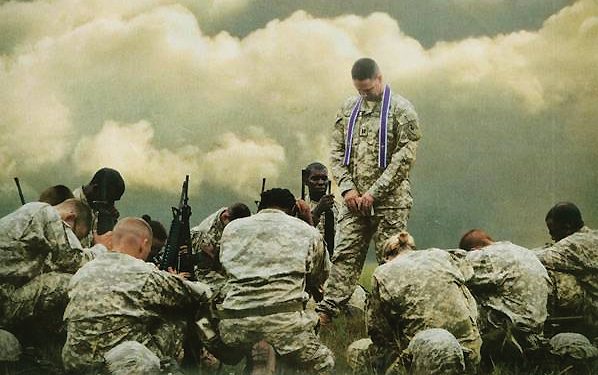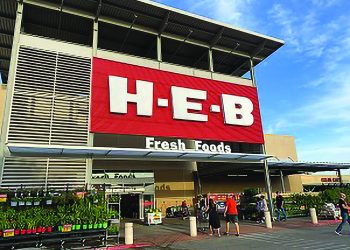The NMOHM may be the most unique museum in the world – if not, certainly among the most unique. Not just because of its inclusiveness in terms of wars, of the heroes involved and the instruments and units of war, but because, unlike many museums, it will embrace and emphasize values, an essential element, perhaps the most essential element, of valor.
There will be a space that addresses the essence of the values part of valor – faith; the source of courage and a value of our warriors that is often overlooked. We hear that there are no atheists in foxholes, and as one who has witnessed the battlefield death rattle of our warriors, I can say that may be true; many final thoughts were of God, that God would save them, that He would forgive them, take care of their families, and those thoughts almost always included love.
Our great generals down through the years, understanding the role of faith in courage, have prayed before battle. General Patton believed that prayer was a combat multiplier. Soldiers love their Chaplains. George Washington, who helped found a country based in faith, actually kept a prayer journal. Perhaps the most memorable image of a general in prayer is that of Washington at Valley Forge.
America recognized early that military training was only part of building a fighting force. We found that warriors fight best when they know that, not only their medical, but their spiritual needs will be covered. We have the finest combat medicine ever. To cover the spiritual needs George Washington founded the chaplains Corps in 1775 about a month after he stood up our Army.
The word chaplain comes from the military cloak, a capella, of St. Martin (born 316, died 397), which he tore in half to warm a beggar. His cloak became a holy relic carried into battle by middle age kings hoping God would carry them to victory. Today the cloak has been replaced by men of God, chaplains.
We have many MOH recipients who risked, and gave, their lives to administer to the physical needs of our warriors. We also have many chaplains who died and risked their lives to care for the spiritual needs of our warriors. Over 400 chaplains have been killed in combat. Nine have earned the Medal of Honor. I know few MOH recipients who do not attribute much of their success to their faith.
Surely among the most famous of all chaplains were the Four Chaplains of World War II, Protestant, Catholic and Jew, who gave up their lives to save others after a German submarine sank their ship. They were classmates from Chaplains school at Harvard, last seen locked in arms singing hymns as their ship went down. Although these men clearly earned the Medal of Honor, it was denied for a technicality, and they received instead the Distinguished Service Cross, our second highest award.
More recently we have two chaplains who are being considered for sainthood by the Catholic Church for actions that earned them the Medal of Honor, Father Emil Kapaun and Father Vincent Capodonno.
Father Kapaun volunteered to stay behind to care for the wounded rather than escape during the battle of Unsan in Korea. He continued to care for them during a 60-mile march in bitter cold to a Chinese POW camp. For seven months, in impossible conditions, he administered to the spiritual and medical needs of his fellow soldiers until he died of total exhaustion.
Father Capodonno died in Vietnam on his second tour while administering to the medical and spiritual needs of his fellow soldiers. The communists shot him 27 times before he stopped caring for his fellow soldiers. Father Capodonno is special to me because he was killed in an area I covered on a day and time I was flying. My crew may have recovered his remains.
This museum will have many unique combinations of hero and outstanding citizen; Theodore Roosevelt, for example, who was not only a Medal of Honor recipient but also the President of the United States – and is on Mount Rushmore. But what could be a greater combination than to be a Saint and a Medal of Honor recipient? If it happens, Father Kapaun and Father Cappadonna will surely be a blessing on our museum.
















